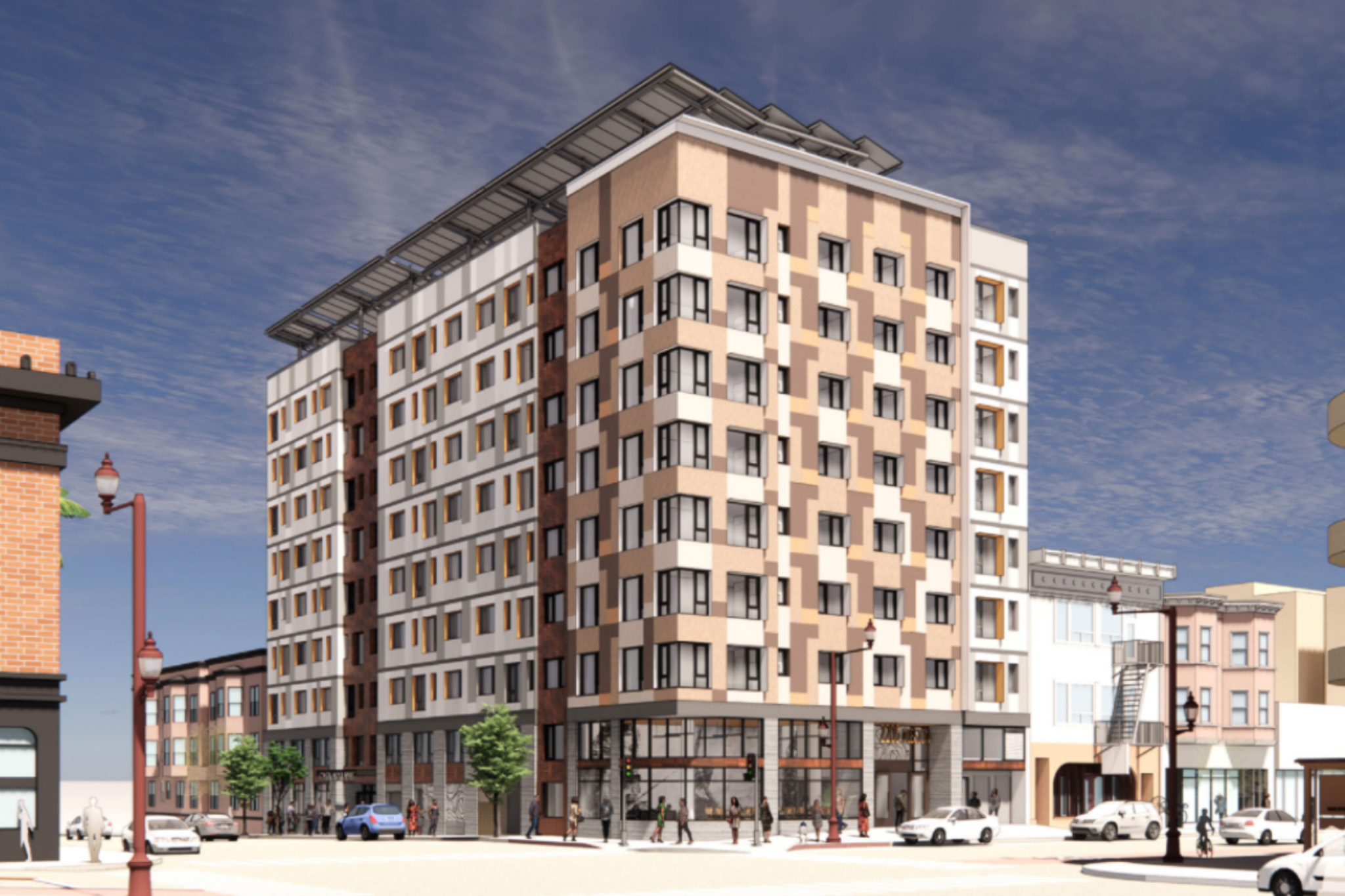Another housing project for San Francisco’s struggling educators is underway—but just how affordable it is remains to be seen.
The Mission Economic Development Agency (MEDA) is building a nine-story, 63-unit building at 18th and Mission streets that’s specifically dedicated to the city’s teachers, who have faced displacement and other financial struggles. Construction is slated to begin in the fall.
The net-zero electric building, another housing project dubbed Casa Adelante (or “Forward House”), would be the second educator housing project to land in San Francisco, preceded by the Shirley Chisholm Village being built on public-school property to rent to educators. This new project, however, adds another layer of stability, as the two- and three-bedroom homes are affordable for educators and their families to own.
Casa Adelante’s homes could be ready by late 2025 or early 2026.
“We determined the need to really shift and focus on our educators,” said Karoleen Feng, MEDA’s director of real estate. “This is part of MEDA’s overall vision for trying to make stable housing and how we’re reversing displacement in the Mission. We’re trying to go all in for our educators.”
The agency is seeking $12 million from the Mayor’s Office of Housing and Community Development under an application that was released last week. If the funds are granted, all 63 units would be sold to educators making at or below 120% of the Area Median Income (AMI).
This helps to account for the “missing middle” housing, covering households that earn too much to qualify for low-income housing but not enough to afford market rates. If Casa Adelante doesn’t receive the funds from Mayor Breed’s housing office, half of the units would be at 80% AMI and the remaining units would be sold closer to market-rate prices.
MEDA excited to create the same model soon at our #MissionSF 100% #affordablehousing 🏬sites at 2060 Folsom and 2205 Mission. https://t.co/AZ0BFvftjS
— medasf (@medasf) December 5, 2019
The city expects to award up to two educator housing projects, to disperse up to $32 million in funds. Selected projects will be announced in June.
“Educator housing is definitely a priority. However, these projects face the same challenges as any other affordable housing project, including increased construction costs and ensuring projects are competitive for state and federal funding,” said Anne Stanley, spokesperson for the mayor’s housing office.
MEDA partnered with teachers union United Educators of San Francisco to help determine affordability.
Frank Lara, vice president of the teachers union, noted that housing for educators resonates with the public. But the issue goes for city workers, of which there are also vacancy issues related to housing costs.
“The only way you’re going to stabilize the workforce for the long term is to provide housing,” Lara said. “If we are to be honest about the future of our children, then we need to be honest about the future of our education workforce. We want to see more of this.”
Future of Educator Housing
Pre-pandemic, momentum to build housing for educators gained enough steam to identify four sites. Of them, only Shirley Chisholm Village, a 135-unit affordable housing building in the Outer Sunset, is nearing the finish line. Construction began in 2022 and may be completed in 2024.
The San Francisco Unified School District identified three other potential sites for educator housing: 20 Cook St. near the University of San Francisco, a parcel at Seventh Avenue and Lawton Street in the Sunset, and 200 Middle Point Road in Bayview-Hunters Point.
However, there is no funding for those projects, which threatens to undermine the city’s ability to retain public school teachers. The mayor’s housing office said educator housing is “definitely” still a priority but faces challenges like increased construction costs and limited state and federal funding.
Under its new draft facilities master plan discussed on Tuesday, staff recommended pushing the gas pedal on plans to build affordable housing for educators. Housing costs have played a role in the district’s 10%annual turnover rate, the report said.
As groundbreaking as Shirley Chisholm Village is for being the first of its kind in San Francisco, the time it took to get there is not lost on those involved.
“That took a dozen years,” Commissioner Jenny Lam said at Tuesday’s Board of Education meeting. “If we’re serious about our student-outcomes work, we know that the recruitment, retention of our educators and our staff is paramount to that success. I want to name how important that is. We don’t have to go it alone.”
